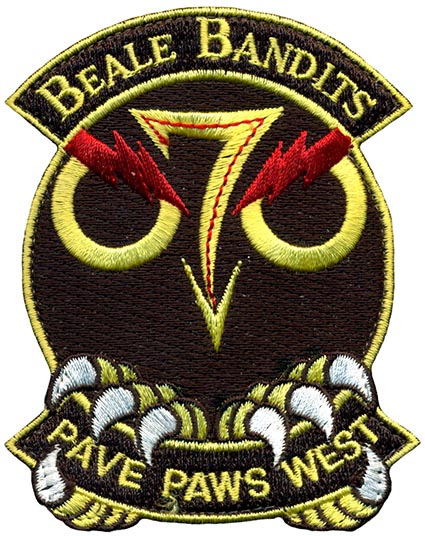Description
Computer made/mounted on velcro 3.5 inch-90mm
7th SPACE WARNING SQUADRON
The 7th Space Warning Squadron (SWS) assigned to Space Delta 4 stationed at Beale AFB, CA, is the premier Space Domain Awareness sensor on the West Coast.
Space Domain Awareness
The 7th SWS is primarily responsible for Space Domain Awareness along two lines of effort: Integrated Missile Warning & Defense (IMW/D) and Space Surveillance (SSA). Their passive mission is IMW/D where they only take action after a missile event has occurred. After autonomously sensing a missile within the coverage area the crew takes action in order to warn senior leaders of threats. All other times, the crew is actively engaged with the radar equipment, tuning and managing radar energy to best acquire, discern, track, and disseminate space object observations.
Integrated Missile Warning & Defense
The 7th SWS is responsible for detecting submarine-launched ballistic missiles (SLBM) fired from the Pacific Ocean and Intercontinental Ballistic Missiles. The unit then determines how many missiles in flight, probable destination, and reports to the North American Aerospace Defense Command’s missile warning center, Cheyenne Mountain AFS; United States Space Command; and National Command Authority.
Speed is a key factor in day-to-day squadron activities. Within 60 seconds after detecting a launch, the crew on duty has to determine if the detection is valid, under investigation, or anomalous due to computer, mechanical or personnel error. After that, the crew determines the number of launched vehicles and provides impact predictions on North America. Once the information is determined, the unit passes updates to the appropriate authorities.
The 7th SWS’s corollary mission of Missile Defense supports the Ground-Based Midcourse Defense (GMD) element of the Ballistic Missile Defense System. This program’s objective is the defense of the United States against a threat of a limited strategic ballistic missile attack. The unit’s Upgraded Early Warning Radar (UEWR) detects, acquires, and tracks inbound missiles to provide the necessary data to classify and engage the target. This target data allows the GMD Fire Control and Communications element to generate a weapons task plan, allowing for the engagement, interception, and negation of threat of a ballistic missile reentry vehicle in the exoatmospheric region of space.
Satellite Surveillance
As missile threats are not common, the squadron’s day-to-day mission is to track earth-orbiting satellites, and reports the information to the 18th Space Control Squadron (18 SPCS) at Vandenberg Space Force Base. This information is then combined with information from other sensors to form a satellite catalog. The CSpOC uses the catalog to keep track of more than 16,000 objects in orbit. The catalog is also used to generate the United Nations Registry Report, so national and international agencies can make sure new satellites will safely launch and orbit.[2]
Equipment
The PAVE PAWS radar uses nearly 3,600 small active antenna elements coordinated by two computers. One computer is on-line at all times, while the second automatically takes control if the first fails. The computers control the distribution of energy to the antennas to form precise patterns, allowing the radar to detect objects moving at a very high speed since no mechanical parts limit the radar sweep. The radar can change its point of focus in milliseconds, while conventional radars may take up to a minute to mechanically swing from one area to another. The main building is shaped like a pyramid with a triangular base 105 feet on each side. The two radiating faces are tilted back 20 degrees. Pave PAWS radar beams reach outward for nearly 3,000 nautical miles in a 240-degree sweep. At its extreme range, it can detect an object the size of a small car. Smaller objects can be detected at closer range.
